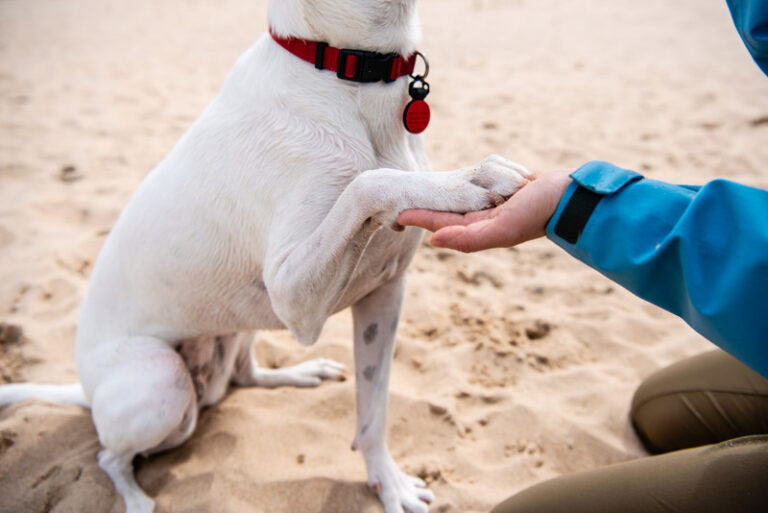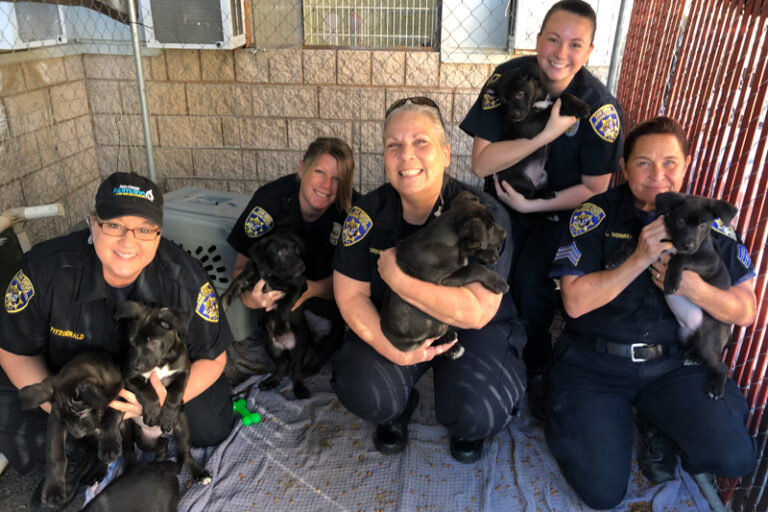We need to talk about pit bulls again. It’s not doing them or us any good to pretend that they don’t exist, and aren’t the dogs still dying in shelters.
They need us to see them, talk about them, advocate for them. They need us to render them visible.
I don’t know about you, but I spent this summer finding myself missing the days when there were organizations in our industry putting breed discrimination at the front and center of all conversations.
They were in our faces constantly, challenging our beliefs and practices, and showing us, with science, that looks don’t equal behavior. At one point, I almost got one group’s tagline tattooed on my arm: All dogs are individuals.
That conversation began to change over the last decade when animal welfare started talking more critically about the discourse around pit bulls, as much as the animals themselves.
Many of us came to believe that even using the word pit bull could be harmful and misleading.
The term pit bull, of course, refers not to any specific breed of dog, but to dogs who belong to several breeds or who merely share some physical traits, and not even specific traits at that; it’s a highly subjective guessing game of what does and doesn’t qualify as a pit bull, with no correct answer since visual breed identification of this sort comes down to a matter of personal opinion, and not objective standards.
Some dogs identified as pit bulls are 25 pounds and slender. Others are 90 pounds and chunky. At its essence, the term pit bull is a visual label based on arbitrary and fluid criteria and varies widely regionally, and shelter to shelter, and in the eye of the beholder.
As we have consistently reinforced to the public, over the last decade, the physical characteristics do not translate to any shared behaviors or personality traits. Two pit bulls may be as similar or dissimilar as any two other dogs. They are, as the tagline goes, individuals.
But we ran into a conundrum: How could animal welfare professionals, on the one hand, ask the public to believe us when we said that the term pit bull is essentially meaningless—and on the other keep advocating for dogs lumped together under that supposedly meaningless label?
(The label is so tricky and slippery that it’s hard to even know if we should put quotation marks around “pit bull” or not; in this blog we won’t, from now on, for the sake of trying to minimize confusion.)
Within the field, we had passionate conversations, and disagreements, about what language to use—and, tied up in there, about whether animal advocacy and advocacy for people should, or could, be disaggregated or considered one unified pursuit.
In 2016, this conversation was beautifully detailed in Bronwen Dickey’s book “Pit Bull: The Battle Over an American Icon.” This book provided us a thorough understanding of the role people have played in constructing what we imagine today to be the pit bull and the ways in which this name has come to be so heavily imbued with socially constructed meaning—most of which doesn’t have much at all to do with the dogs themselves, but rather, the people who are associated with them.
Those were, without question, the most generative, critically thoughtful days for the conversations around pit bulls—and therefore shelter dogs, since to the extent we understand there is a type of dog called the pit bull, they are unquestionably the dogs most at risk of coming into, and losing their lives in, U.S. animal shelters.
Since these exciting, provocative days, we’ve reached an uncomfortable point where instead of provocative conversations about how we should talk about pit bulls, we now find ourselves without new resources and information, at a time when advancing this discussion is still so critical to lifesaving and keeping families together.
They are the dogs who are in our shelters, but now they are being stereotyped or ignored to their and our peril.
You can see this front and center in two complementary, equally problematic narratives that have taken hold.
The first is articulated in a recent Axios story called The Great American Dog Shortage—the premise of which is that there are not enough dogs for all the people who want them, and that animal shelters no longer have enough “desirable” pets to meet the market demand.
The second is that the animals left in shelters just aren’t the ones who people want. Keep in mind, as you think that one through, that 6.5 million animals are still entering U.S. shelters every year, and an estimated 1.5 million are still dying in them.
Behind this second narrative is the underlying assertions that dogs left in shelters are damaged, broken, undesirable, unworthy, unhealthy, or otherwise “unadoptable” for any number of reasons, including because they are the “wrong” breed or type.
Meanwhile the pets left in shelters who are still dying, are being rendered almost entirely invisible in these conversations.
If these conversations continue unchecked, dogs—disproportionately, inarguably, the dogs we used to call pit bulls—are likely to continue to die. And we’re likely to justify those deaths because “no one wants those dogs.”
We need to take a sharp U-turn and return to the hard conversations about pit bull dogs. For the sake of dogs and the people who love them, we must not allow ourselves to move on from the critical questions about why pit bull dogs still fill our shelters, languish in our shelters, and die in our shelters.
Here are just a few starting points for the conversations we need to be having on behalf of the dogs we know as pit bulls.
1. Housing discrimination: Shelters are still full of dogs people want to adopt, but cannot, due to discriminatory housing policies that ban certain sizes and breeds of dogs, with sweeping bans of dogs labeled as pit bull dogs.
The Human Animal Bond Research Institute (HABRI) calculates that 8.75 million pets could find homes if housing restrictions were lifted. They find 10.5 million pets would be positively impacted, either by being adopted or by NOT being surrendered to an animal shelter. That is every single pet now dying in U.S. animal shelters, many times over.
If you’ve worked in animal welfare for any amount of time, you’ve likely encountered countless adopters who cannot even consider a pit bull dog because their apartment complex or homeowners association has a discriminatory policy.
In addition, pit bull dogs disproportionately end up in shelters because their human family members, despite their best efforts, simply cannot find a place for them and their pets to live.
There is work being done on this point, that we can join. The nonprofit My Pit Bull is Family, led by Executive Director Shannon Glenn, keeps a database of pet-friendly rentals across the country with no restrictions on breed or weight. The organization is also focused on keeping families together by expanding pet-inclusive housing, and has been working on this issue for a decade. In 2021 MPBIF, launched their Rental Research Dashboard where advocates around the country can see pet policy data collected in real time.
2. Discrimination against dogs is discrimination against people.
As Animal Farm Foundation writes, “Public and private policies that ban or restrict dog ownership based on a dog’s known breed or appearance have a deep impact on individuals and on society at large. What is often misguidingly called ‘canine discrimination’ is not about dogs at all. All breed-specific policies and laws can be traced to racism, classism, and ableism.”
As we work to fight inequity and barriers to create more diverse and inclusive animal welfare organizations, we must consider how our narratives about pit bulls have enabled thinly-veiled racist and classist discourse and practice in animal welfare to continue mostly unchecked.
3. The system itself is causing behavior issues that can make pit bulls unwanted.
Months-long, solitary confinement cage housing in a loud, high-stress environment is making otherwise good dogs have mental breakdowns. This is true to some extent for all shelter pets, but for pit bull dogs, who fall into a category of big dogs, the stakes of life and death are higher.
The animal sheltering system, in our case, is the problem. In our conversations about dogs, we must put the transformation of animal sheltering at the very top of the list.
Long-term, institutional, isolation confinement of pit bull dogs must be replaced by a new system that gives dogs freedom to exercise, interact with people and other dogs, and live in a home environment while we work to find them a new home.
Foster care must replace cages as the primary means of housing dogs and we should even be considering subsidizing in-home care.
4. Animal shelters are still full of good pit bull dogs and those dogs are still dying.
We must not turn our backs on pit bull dogs, while we plan for a different future.
If animal welfare is to continue to serve as the supply source for pets, it is reasonable for us to consider creating humane breeding standards and working with “responsible” breeders (including “backyard” breeders).
It is also reasonable for us to consider how supplying particular types, ages, or breeds of animals can subsidize our work to save the lives of pit bull dogs.
However, we cannot ethically have these conversations about the future of animal welfare without always also talking about what is still happening to pit bull dogs in shelters in every state, every day.
5. Animal welfare has to recognize and correct how we might be reinforcing discrimination against pit bulls.
Historically, we have often been the source of information that leaves community members thinking that pit bulls are different, other, or less than.
In many organizations, decades-long bans on adoptions of pit bulls or highly-restrictive adoption policies limited the adoption and rescue pool for these dogs. And sadly, in some communities these “special requirements” still exist.
These policies not only pertain to the dogs, but tend to reveal our biases against adopters as well.
The good news is that we have the power to change this, but it necessitates facing down some of the deeply prejudiced thinking we’ve had around both pit bulls and people.
In a way, we may have convinced ourselves that pit bulls no longer need our advocacy because of some advances in the conversation around them, but perhaps more than ever this group of dogs needs us to redouble our efforts.
Today, as we sit at a critical juncture in our movement, so much is at stake for the dogs still left behind, who face invisible deaths at the hands of broken-hearted shelter workers while the animal welfare industry and the media reinforce the narrative that these are not dogs who anyone wants.
These are pit bulls. We need to see them, and talk about them, and render them visible.
Here is what I hope: I hope we’ll have many more diverse voices leading these conversations around pit bull dogs, and that there will be sufficient funding available to do so with the seriousness and commitment the issue demands.
I hope we won’t forsake pit bulls because the constructs of power that have built these dogs are just too big and complicated for us to fix.
I hope we’ll stop en masse the institutionalization of all companion animals in favor of a new Human Animal Support Services model.
I hope young people will take on this fight and lead us in new and radically different directions.
I hope the story of every dog will begin to be told, because it is in those stories, and only in them, that we can see the truth of what we’ve done to create this mess and how we may realize something better.








